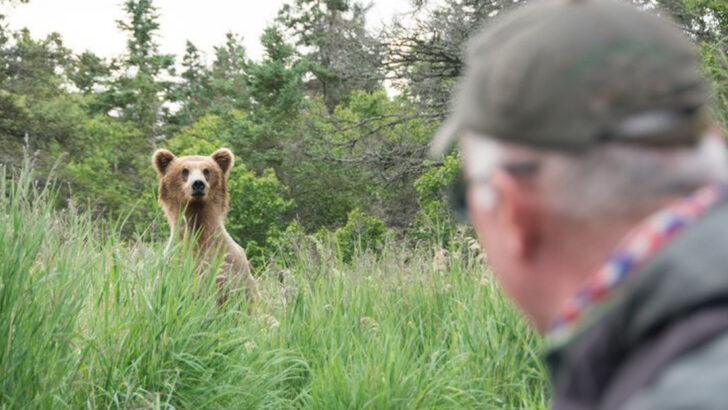Step into the wild at your own risk.
U.S. National Parks are breathtaking playgrounds of nature — but behind the stunning views lurk dangers you might never expect.
From stealthy bears to snapping alligators, some parks have earned a notorious reputation for fatal animal encounters.
This isn’t your average nature hike story — these are places where the wild fights back, and not everyone walks away unscathed.
Curious which parks top the list?
Get ready for a wild ride through America’s most perilous natural havens.
You’ll discover where danger hides, why these encounters happen, and how to survive if you find yourself face-to-face with the ultimate wilderness residents.
Nature’s beauty comes with a fierce side — and this post uncovers it all.
Yellowstone National Park
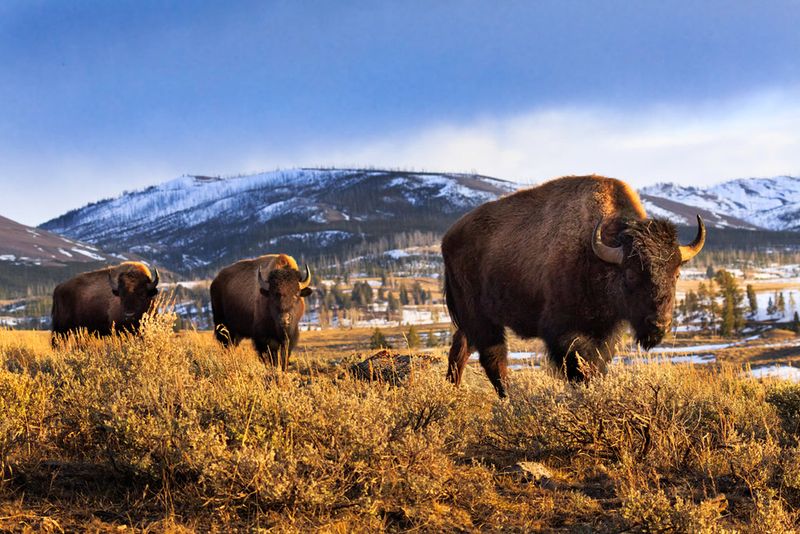
Yellowstone, with its iconic geysers and vast wilderness, is home to a plethora of wildlife, including the mighty bison. These majestic creatures, though appearing docile, can become aggressive if disturbed. Visitors are often fascinated by their sheer size, but it’s crucial to maintain a safe distance.
Beyond bison, Yellowstone’s bears are also a significant concern. Hikers should be vigilant and carry bear spray. The park’s diverse ecosystem is a testament to nature’s grandeur, yet its inhabitants remind us of the wild’s unpredictability.
Did you know? Yellowstone was the first national park in the world, established in 1872.
Denali National Park
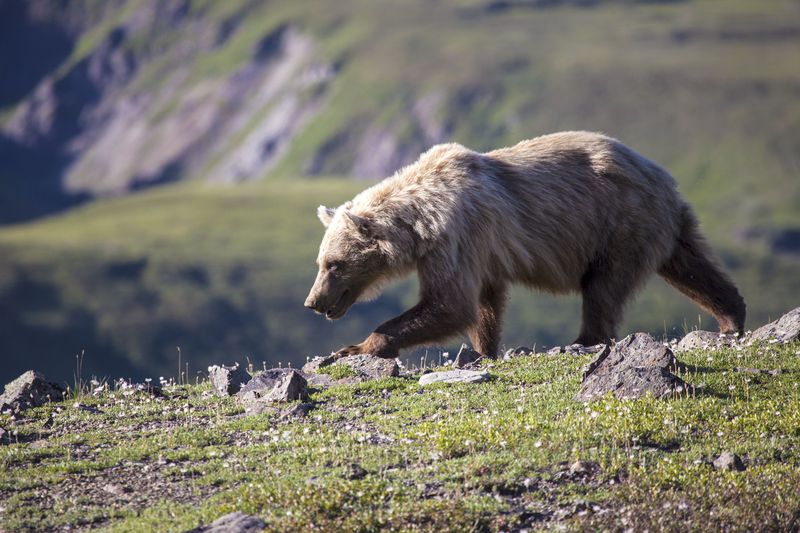
Nestled in Alaska, Denali National Park is renowned for its stunning vistas and the towering Denali peak. Grizzly bears roam its expansive terrain, often spotted fishing in its clear streams. Despite their beauty, these bears can pose a threat if surprised or approached.
Visitors should respect their space and be equipped with knowledge and tools to ensure safety. The park’s isolation offers a sense of solitude and adventure for those willing to brave its challenges.
Fun Fact: Denali, previously known as Mount McKinley, is the highest peak in North America, standing at 20,310 feet.
Glacier National Park

Glacier National Park, located in Montana, captivates with its pristine lakes and majestic mountains. The park is home to elusive mountain goats, often seen navigating steep terrains with ease. Their agility is a marvel, yet the park’s bears demand caution.
Visitors should store food properly and remain alert during hikes. The breathtaking landscape is a testament to the wonders of the natural world, offering both beauty and potential hazards.
Did you know? Glacier National Park shares a border with Canada’s Waterton Lakes National Park, forming the Waterton-Glacier International Peace Park.
Grand Teton National Park
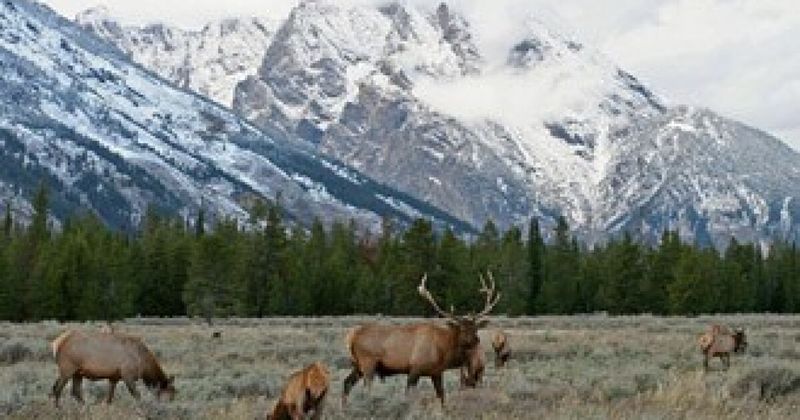
Grand Teton National Park, with its striking peaks and serene lakes, is a haven for nature lovers. Elk are a common sight, their bugling calls echoing through the valleys during rutting season. However, these majestic animals can be unpredictable, especially when protecting their young.
Visitors should enjoy the scenery from a distance, respecting wildlife boundaries. The park offers a mix of tranquility and excitement for those seeking a wilderness experience.
Fun Fact: The park was named after the Grand Teton, the tallest mountain in the Teton Range, standing at 13,775 feet.
Great Smoky Mountains National Park

In the heart of the Appalachian Mountains, the Great Smoky Mountains National Park boasts a rich tapestry of flora and fauna. Black bears are frequently spotted, often emerging from dense thickets in search of food. Though they may appear inquisitive, they can pose a threat if cornered or startled.
Visitors should adhere to safety guidelines and appreciate the park’s beauty without infringing on the animals’ space. The misty vistas and diverse ecosystems make it a must-visit.
Did you know? The Great Smoky Mountains are among the oldest mountains in the world, formed approximately 200-300 million years ago.
Yosemite National Park
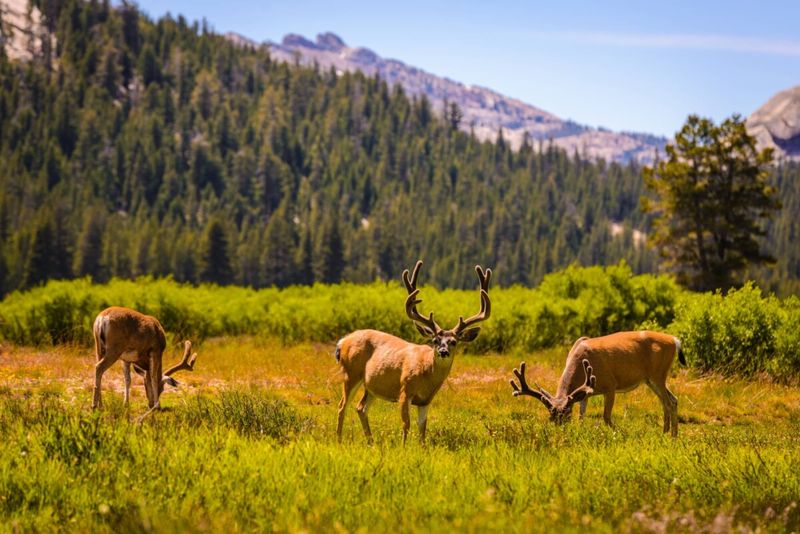
Yosemite National Park, famed for its dramatic cliffs and waterfalls, is also home to mule deer. These graceful creatures are often seen grazing in meadows, adding to the park’s serene ambiance. However, the presence of mountain lions requires caution, especially during twilight hours.
Hikers should stay in groups and remain vigilant. Yosemite’s enchanting landscapes offer a refuge for both wildlife and visitors, embodying nature’s duality of beauty and danger.
Fun Fact: Yosemite’s iconic El Capitan is one of the largest exposed granite monoliths in the world, attracting climbers from across the globe.
Sequoia National Park
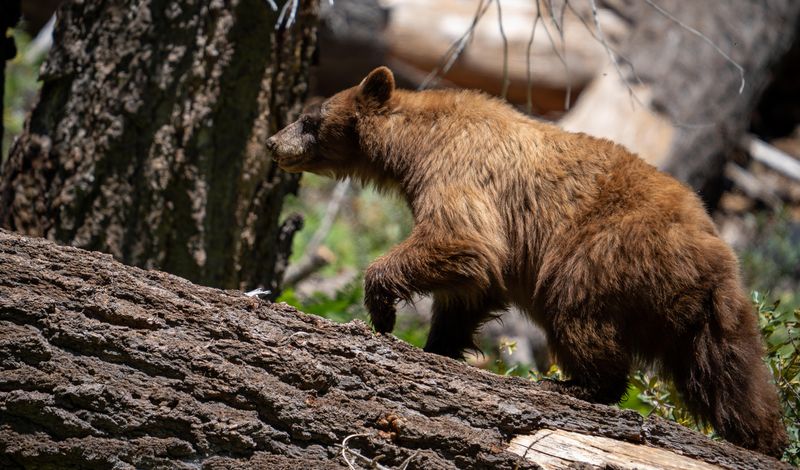
Renowned for its towering trees, Sequoia National Park is a sanctuary of ancient giants. Amidst these colossal sequoias, black bears find refuge, often seen clambering up trees. Their playful antics can be misleading, as they are powerful and potentially dangerous.
Visitors are advised to store food securely and maintain a safe distance from wildlife. The park’s awe-inspiring trees offer a glimpse into nature’s resilience and grandeur.
Did you know? The General Sherman Tree in Sequoia National Park is the largest living tree on Earth, estimated to be over 2,200 years old.
Zion National Park
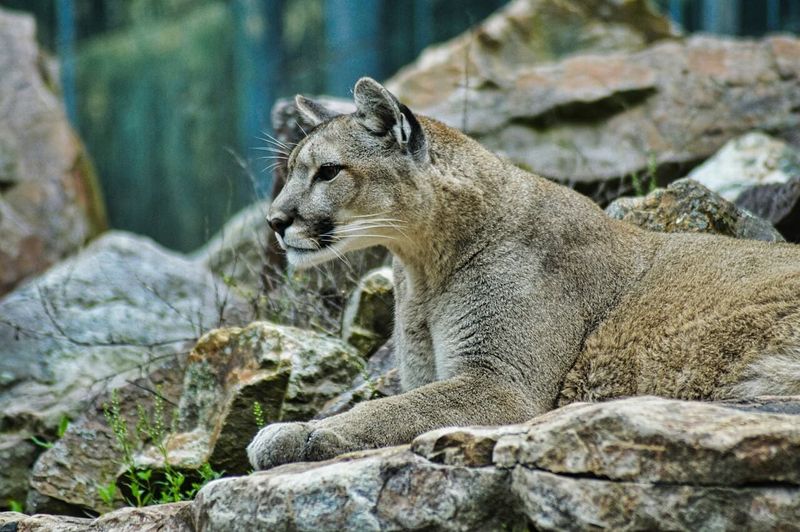
Zion National Park’s red rock canyons draw adventurers and nature enthusiasts alike. While the stunning vistas captivate, it’s the elusive mountain lions that demand respect. These predators roam the park, and encountering one is a reminder of the wild’s presence.
Hikers should travel in groups and avoid dawn or dusk excursions when these animals are most active. Zion offers a blend of beauty and intrigue, with its landscapes echoing stories of time and transformation.
Fun Fact: Zion is Utah’s first national park, established in 1919, and showcases some of the most unique geological formations.
Rocky Mountain National Park
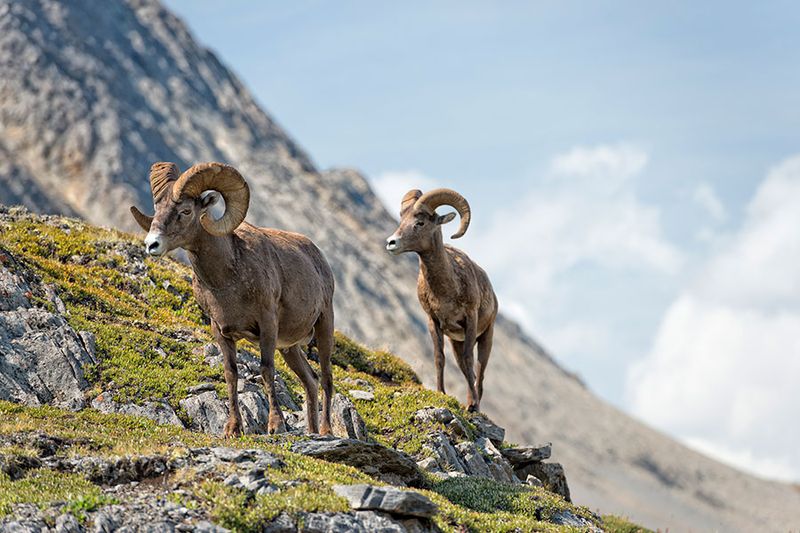
The Rocky Mountains are synonymous with grandeur, and the national park is no exception. Bighorn sheep navigate the rugged cliffs, their horns a symbol of nature’s incredible adaptations. Though fascinating, visitors should approach with caution, as these animals can become territorial.
The park’s trails offer breathtaking views and the thrill of encountering wildlife in their natural habitat. A visit here is a journey into the heart of alpine beauty.
Did you know? The park spans the Continental Divide, where waters flow either to the Atlantic or Pacific Oceans.
Everglades National Park

In the subtropical wilderness of Everglades National Park, alligators are a common sight. These ancient reptiles bask in the sun, seemingly motionless, yet their speed and power are formidable. Visitors should keep a safe distance, recognizing the potential danger.
The park’s unique ecosystem is home to a diverse array of wildlife, offering a glimpse into a world where water and land intertwine seamlessly.
Fun Fact: The Everglades is the only place on Earth where alligators and crocodiles coexist, showcasing a rare ecological phenomenon.
Olympic National Park
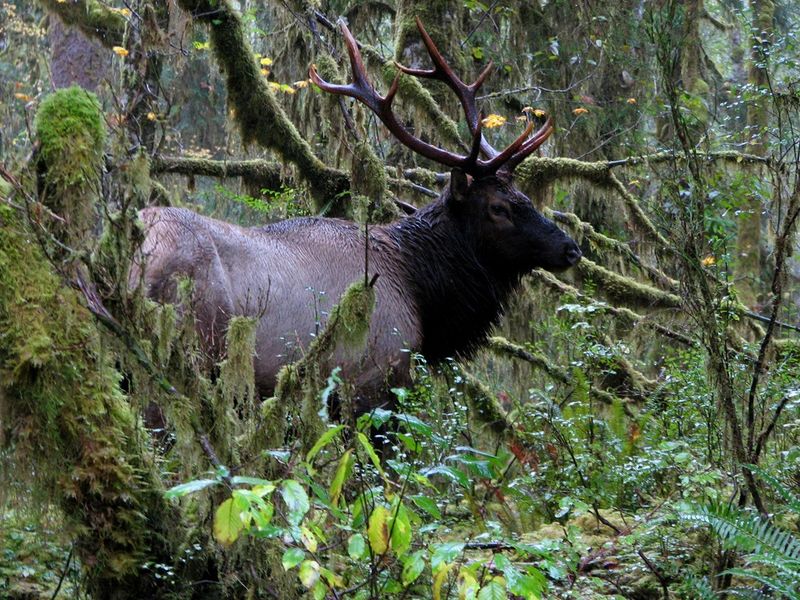
Olympic National Park’s diverse landscapes range from rugged coastlines to lush rainforests. Roosevelt elk, the park’s largest land mammals, roam these verdant areas. Their impressive antlers are a sight to behold, but caution is advised during the rutting season.
Visitors can enjoy the beauty of the rainforest while respecting the wildlife’s space. The park’s biodiversity makes it a treasure trove for nature enthusiasts.
Did you know? Olympic National Park is a UNESCO World Heritage Site, recognized for its exceptional natural beauty and ecological significance.
Grand Canyon National Park
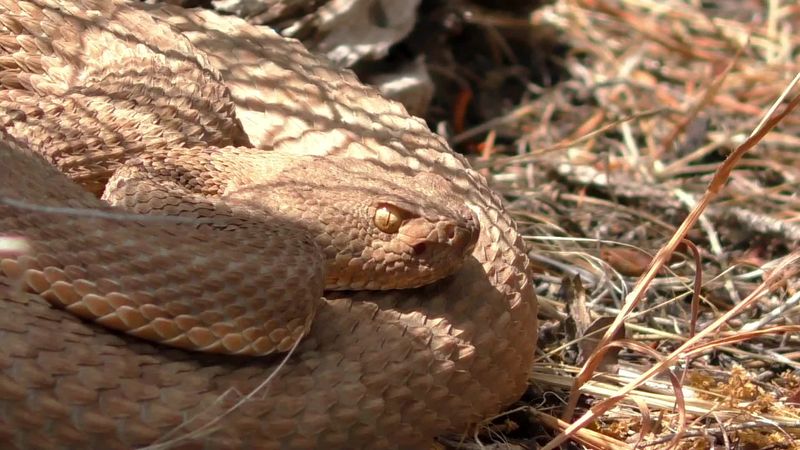
The Grand Canyon’s vast expanse is a testament to nature’s erosive power, but it’s the hidden dangers that often go unnoticed. Rattlesnakes are common, lurking in the shadows and ready to strike if threatened. Visitors should remain vigilant, especially when venturing off the beaten path.
The canyon’s beauty is breathtaking, offering panoramas that are both humbling and inspiring. It’s a place of wonder and caution.
Fun Fact: The Grand Canyon is one of the Seven Natural Wonders of the World, drawing millions of visitors each year.
Acadia National Park

Acadia National Park’s dramatic coastlines and granite peaks offer a haven for the adventurous soul. Peregrine falcons soar above, their speed a marvel in itself. While captivating, these birds can be protective, especially near nesting sites.
Visitors are encouraged to observe from a distance, appreciating the natural spectacle without intrusion. The blend of sea, sky, and rock creates a unique tapestry of beauty and wildness.
Did you know? Acadia was the first national park east of the Mississippi River, established in 1916, preserving a slice of coastal Maine’s rugged charm.
Shenandoah National Park
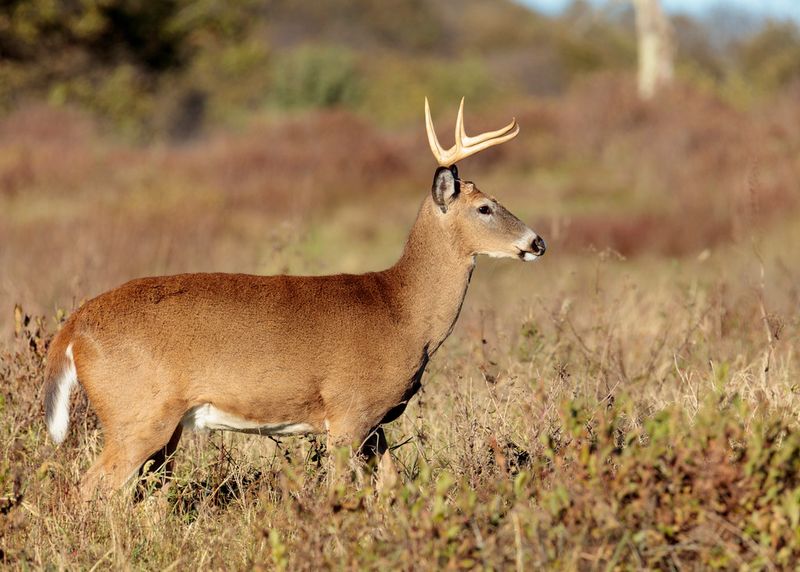
Shenandoah National Park, nestled in Virginia’s Blue Ridge Mountains, is a tapestry of rolling hills and serene vistas. White-tailed deer are a frequent sight, their graceful movements a symbol of the park’s tranquility. Yet, caution is advised, especially during breeding season when they can become unpredictable.
The park offers a peaceful retreat for those seeking solitude and reflection in nature’s embrace.
Fun Fact: Shenandoah’s Skyline Drive is a 105-mile scenic byway, offering stunning views of the surrounding landscape and attracting leaf-peepers in the fall.
Cuyahoga Valley National Park
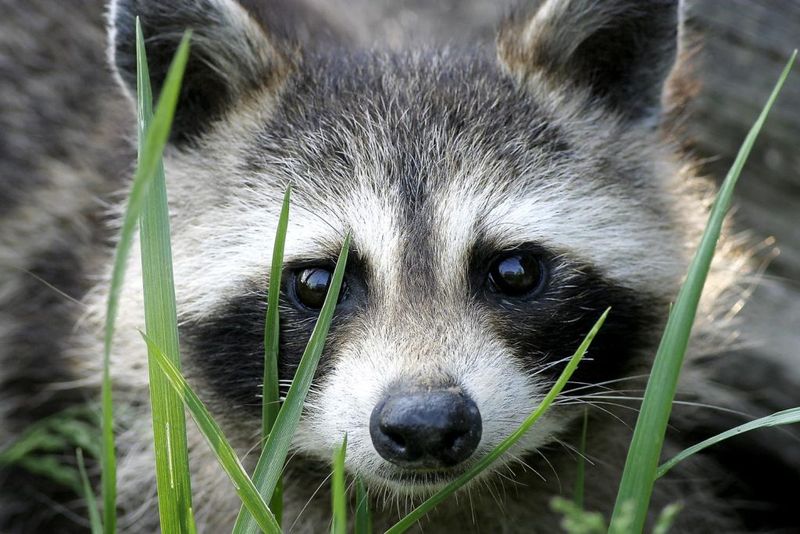
Cuyahoga Valley National Park, with its winding waterways and verdant landscapes, is a sanctuary for diverse wildlife. Raccoons are often spotted near the riverbanks, their curious nature endearing yet potentially troublesome if they feel threatened.
Visitors should admire from afar, keeping food secured to avoid attracting these clever foragers. The park’s serene environment offers a calming escape into nature’s embrace.
Did you know? The park is situated between Akron and Cleveland, preserving a vital green space within the industrial heart of Ohio.
Katmai National Park
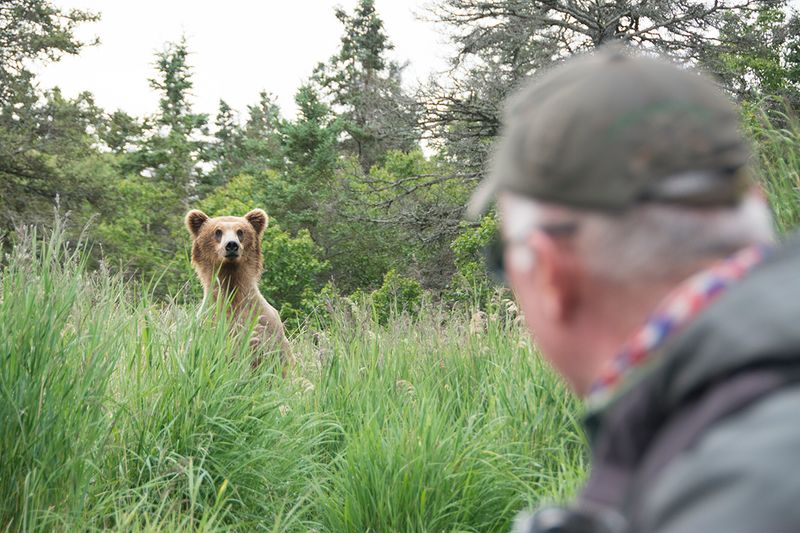
Katmai National Park in Alaska is teeming with wildlife, including the iconic grizzly bears. Visitors flock to Brooks Falls to witness these magnificent creatures fishing for salmon. The park’s remote location adds to its allure, drawing adventurous souls.
However, the presence of these powerful animals demands respect and caution. Bears are typically indifferent to humans, but surprise encounters can occur. Stay vigilant and adhere to park guidelines.
Did you know? Katmai was established in 1918 to protect the region devastated by the volcanic eruption of Novarupta. Its wild beauty continues to captivate visitors.

